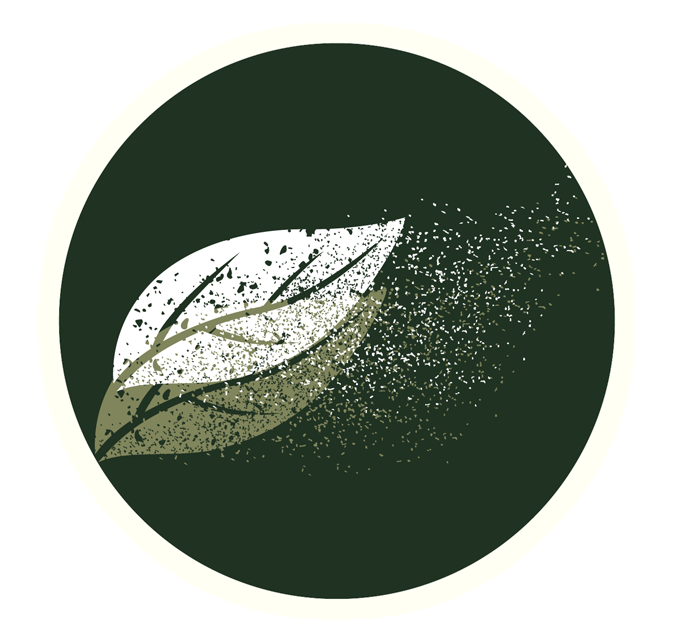Full instructions on how to use the Green Johanna are included in the user manual but here are a few quick pointers.
When choosing a site for the Johanna, remember that it needs to be a spot that is easy to get to, not too far from the house.
Good design
The Johanna was designed and originally manufactured in Sweden but is now made for Great Green Systems in Droitwich, Worcestershire.
The Johanna’s design promotes the good ventilation and airflow necessary for efficient composting.
Vents leading in from the base plate allow air to flow upwards into the container. The round shape ensures there are no cold corners so heat is spread evenly through the compost. The tapered design means that compost sinks towards the centre of the unit and not to its sides, allowing air to circulate and oxygenate the compost.
As the micro-organisms break down the waste, they generate heat. As the temperature in the compost fluctuates, the types of micro-organisms present also change.
The Insulating Jacket (available separately) provides insulation to maintain ideal internal temperatures. It should be removed in hot weather or the temperature inside the unit will become too hot for the composting creatures to survive (above 70 degrees Celsius).
The Johanna’s lid regulates the ventilation system by covering or uncovering the ventilation holes to adjust air circulation and temperature.
Composting basics
Successful composting depends on three essential ingredients: materials, air, moisture.
MATERIALS – The microbes in your compost bin need a diet that provides a balance between waste materials that are rich in nitrogen and carbon. In composting terms, nitrogen-rich materials are often referred to as Greens and carbon-rich materials as Browns.
Nitrogen-rich materials (Greens) include:
- Food waste, fresh grass and leaves, plants, flowers, tea leaves, home compostable tea bags, coffee grounds. These items break down quickly and contain moisture so they keep the bin’s contents moist.
Carbon-rich materials (Browns) include:
- Twigs, branches, autumn leaves, paper, cardboard, straw, wood chips, sawdust. These contents are drier and slower to break down.
A mixture that contains a 50:50 balance of nitrogen (Greens) to carbon (Browns) is a good place to start for composting. You may find that you have a lot more nitrogen-rich inputs (food waste) than carbon so it can be handy to store carbon-rich items such as paper, cardboard and autumn leaves so you have them ready to add with food waste.
The smaller the waste items are chopped or shredded, the greater the surface area for microbes to work on and the faster the pile will heat up. Items that are added whole, such as apples or carrots etc, will take longer to break down. Egg shells are best added crushed or ground. Garden waste should be chopped into pieces no larger than 5cms or shredded.
Getting the nitrogen/carbon ratio right can be a case of trial and error but you will learn quickly through paying attention to conditions in the bin.
AIR – The fastest form of composting is done by organisms that need oxygen. To give microbes air to breathe we need to add air to the mixture by aerating the contents to make sure there’s oxygen throughout the bin.
You can create air pockets by adding the cardboard tubes from toilet or kitchen rolls whole and keeping cardboard egg boxes whole. Scrap paper can be added scrunched up so that it provides pockets of air. Wood chips are useful as they hold structure and create pathways for air.
WATER – You want your compost pile to be moist, rather than wet or dry. The consistency of the bin’s contents should be damp like a wrung-out sponge. Microbes struggle if their environment is too wet or too dry. They need water to live, yet too much moisture can limit the amount of oxygen they receive. If compost is too wet, it will start to smell bad. If this happens you need to add shredded paper and cardboard and aerate well so that moisture is absorbed.
Add water to compost that is becoming dry by gently watering with a small watering can or water wand.
Adding food waste
Food waste can be added directly or in home compostable bags, never plastic. If you tie the bags, once you have added them to the Johanna make sure to break them open using the aerator stick to allow oxygen and microbes to reach the waste.
Mix new additions with some of the older layer beneath. After adding food waste, cover with carbon-rich waste such as shredded branches and twigs, dead leaves, wood chips, shredded paper and cardboard.
The only food-related materials that are not efficiently digested by the Johanna are those that require a very long time to break down, such as large amounts of cooking oil/fat, the hard shells of nuts and seafood (such as oysters and crabs) and avocado stones.
You can boost the breakdown process by adding bokashi bran (available separately), fermented waste from a bokashi bin, or a bucketful of mature compost.
And finally…
To access your finished compost simply unscrew the hatches at the bottom of the Johanna and remove the compost using the aerator stick or a garden hoe.



